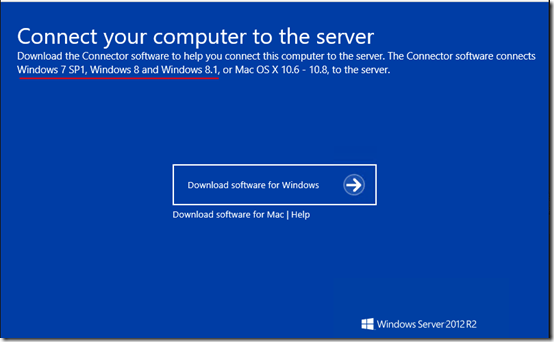
- #What is windows 2012 server essentials upgrade
- #What is windows 2012 server essentials full
- #What is windows 2012 server essentials series
#What is windows 2012 server essentials upgrade
The 'Blue' upgrade to Windows Server 2012, R2, looks much like its predecessor, but there are plenty of changes when you look at the fine detail. The related Hyper-V Recovery Manager handles failover, monitoring primary servers and automatically switching load to a disaster recovery site, ensuring business continuity. It's asynchronous and replicas can be tested without forcing a failover to the recovery site - and while the replica keeps on being updated (you can set replication points from 30 seconds to 15 minutes depending on server utilisation). However, the most useful new feature is Hyper-V Replica, which lets you quickly set up a disaster recovery site, and keeps it up to date. Perhaps the most obvious is an improved virtual disk format, with support for up to 64TB dynamic disks that can be resized on the fly. (Screenshot: Simon Bisson/ZDNet)Įven though we weren't able to set up Hyper-V on our test install, there are plenty of improvements to Microsoft's virtualisation platform. The real heart of Windows Server 2012 R2 is PowerShell, and PowerShell 4.0's new Desired State Configuration tools make it easier to deploy and manage servers - and to keep them running just the way you want. With DSC you can define the managed elements of a server or a service, and can ensure they always have the correct configuration. Desired State Configuration (DSC) is an extremely powerful tool that can help prevent configurations from drifting over time - something that's increasingly important in automatically managed service deployments, where users use self-service portals to define the servers they want to deploy. It's a useful one-stop shop for managing one or many servers, although for more complex tasks you'll want to use PowerShell (especially its new Desired State Configuration tools) or System Center 2012 R2. It's a modern-style desktop application that gives you an overview of running services from its dashboard, as well as launching the familiar Windows Server management tools and handling role and feature installation. Windows Server 2012 R2 is configured, like Server 2012, via Server Manager. That shouldn't be surprising Microsoft has been talking about Windows Server as a key component in its Cloud OS for some time, and those are the key features needed to build and run a cloud service on Windows Server. The real changes are under the surface, with significant enhancements to Hyper-V, Storage Spaces and to Active Directory.

When it comes to the user interface, there's little difference between Windows Server 2012 R2 and its predecessor. It's only when you start to delve into the details that you find just how many changes there are. Windows Server 2012 R2 looks very like its predecessor. Although we've found that a Surface RT's 1366-by-768 screen is just the right size for working with a remote Windows Server 2012 R2, not everyone has the option of using the touch features Microsoft has put into its server.

You can also turn off hot corner support for Windows 8-style navigation, a feature that comes in handy if you're using a non-touch-enabled monitor or a remote desktop. Server 2012 R2 boots to the Start Screen, although there's the option of choosing boot to desktop. We were able to get up and running in just a few minutes, only needing to choose keyboard and language options.
#What is windows 2012 server essentials full
Like Windows Server 2012, R2 has two installation options: a full GUI and the command-line-only Server Core. Although that meant we were unable to look at some of the new Hyper-V features in R2, it gave us a good picture of what you'll need to know when setting up Microsoft's latest server. Microsoft recently released a preview build of Windows Server 2012 R2, and we installed it as a Hyper-V virtual machine running on a Windows Server 2012 system. All of which means that Windows Server 2012 R2 is much more than just another service pack adding new features that make it easier to build cloud applications and services in your datacentre, and to move them to and from Azure. At the heart of that core platform is Windows Server, the foundation for Azure and for what Microsoft calls its Cloud OS.
#What is windows 2012 server essentials series
It's the next step on Microsoft's journey to becoming a devices and services company, and the first of what the company intends to be a regular series of updates to its core platform. Microsoft's 'Blue' wave of tools and technologies is more than just a user interface refresh.

Ukrainian developers share stories from the war zone

The best Wi-Fi router for your home office 3G shutdown is underway: Check your devices now


 0 kommentar(er)
0 kommentar(er)
